Finished Infinity Pi Quilt!
Yesterday I started making an infinity-pi quilt, thinking it would take several days to finish. Thanks to my stupidly looking at the stitchcam at 2AM and thus being forced to go into the office to stop it from running forever without bobbin thread, it actually got done early this morning. Total stitching time was around 12-15 hours.
I am extremely pleased with the result, and have decided to make the quilt available for sale. Due to the stitching time, and the use of expensive wool batting, this quilt costs 200π ($628.30), twice the price of the older, lower-density pi quilt.
The older pi quilt is a very warm, puffy quilt. Nina says it's her favorite of all our designs. But it only displays about 150 digits of pi. This new one is much thinner (due to the dense stitching), but it displays all the digits. Yes, all infinity of them! Well, technically, after about the first 5800 digits they start getting hard to read, and after about 10,000 digits each digits is represented by less than one whole stitch (to the point where the last infinite number of digits is represented by a single stitch). But conceptually they are all there, because the pattern converges on an infinite number of infinitely small digits arranged into an infinite number of concentric rings of thread. (Actually there are only 28 rings, but what's a little factor of infinity between friends?)
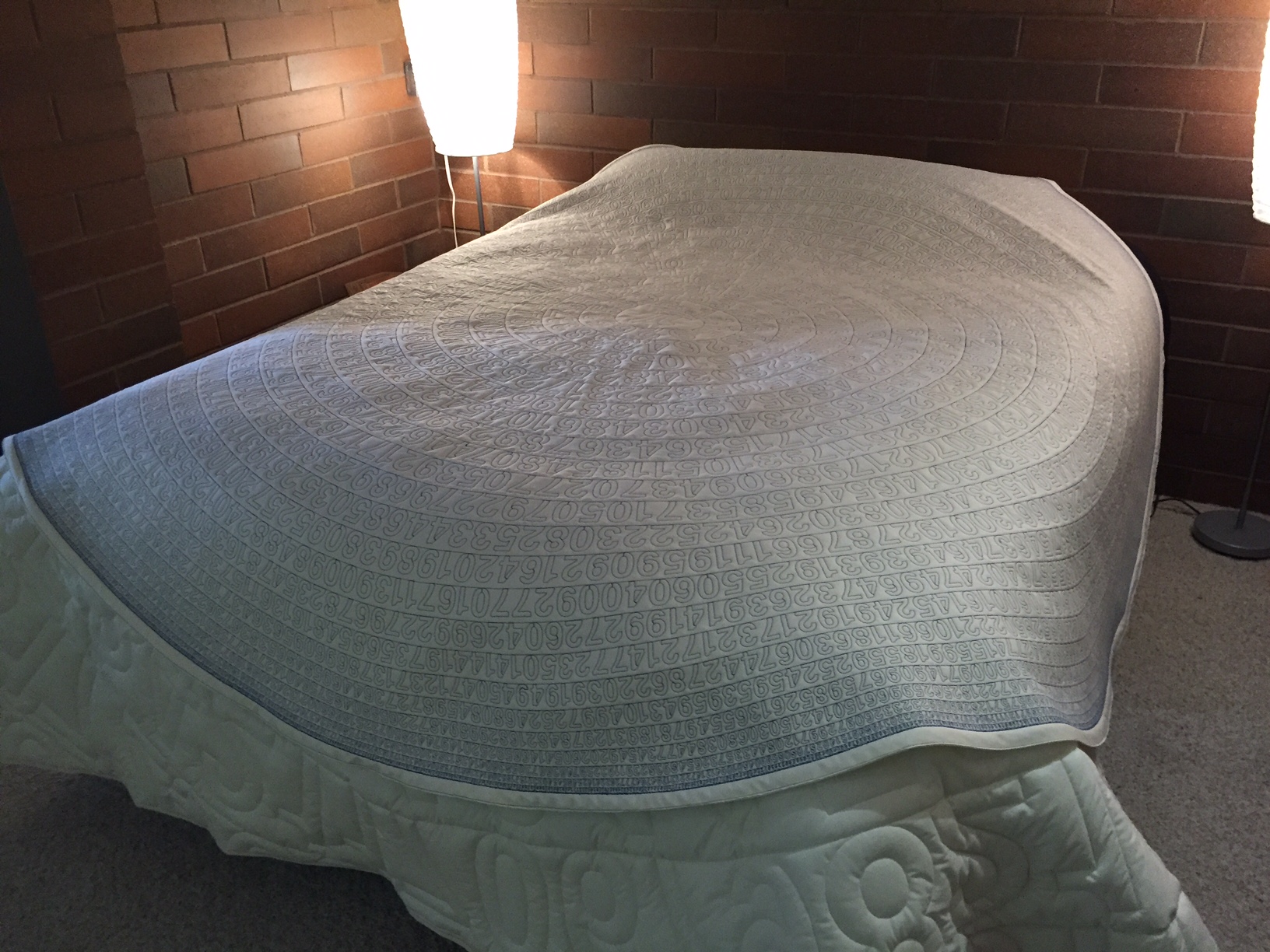
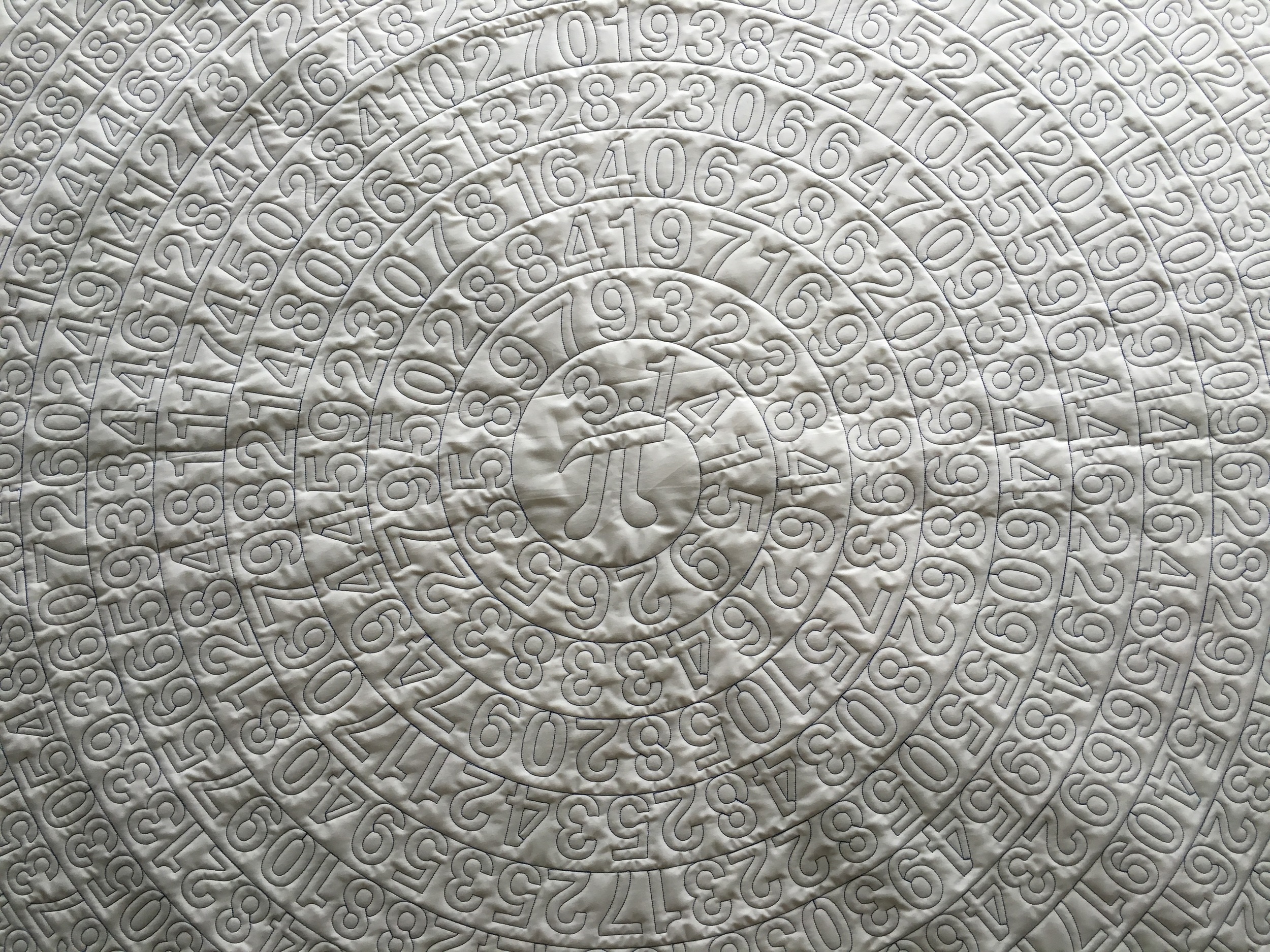
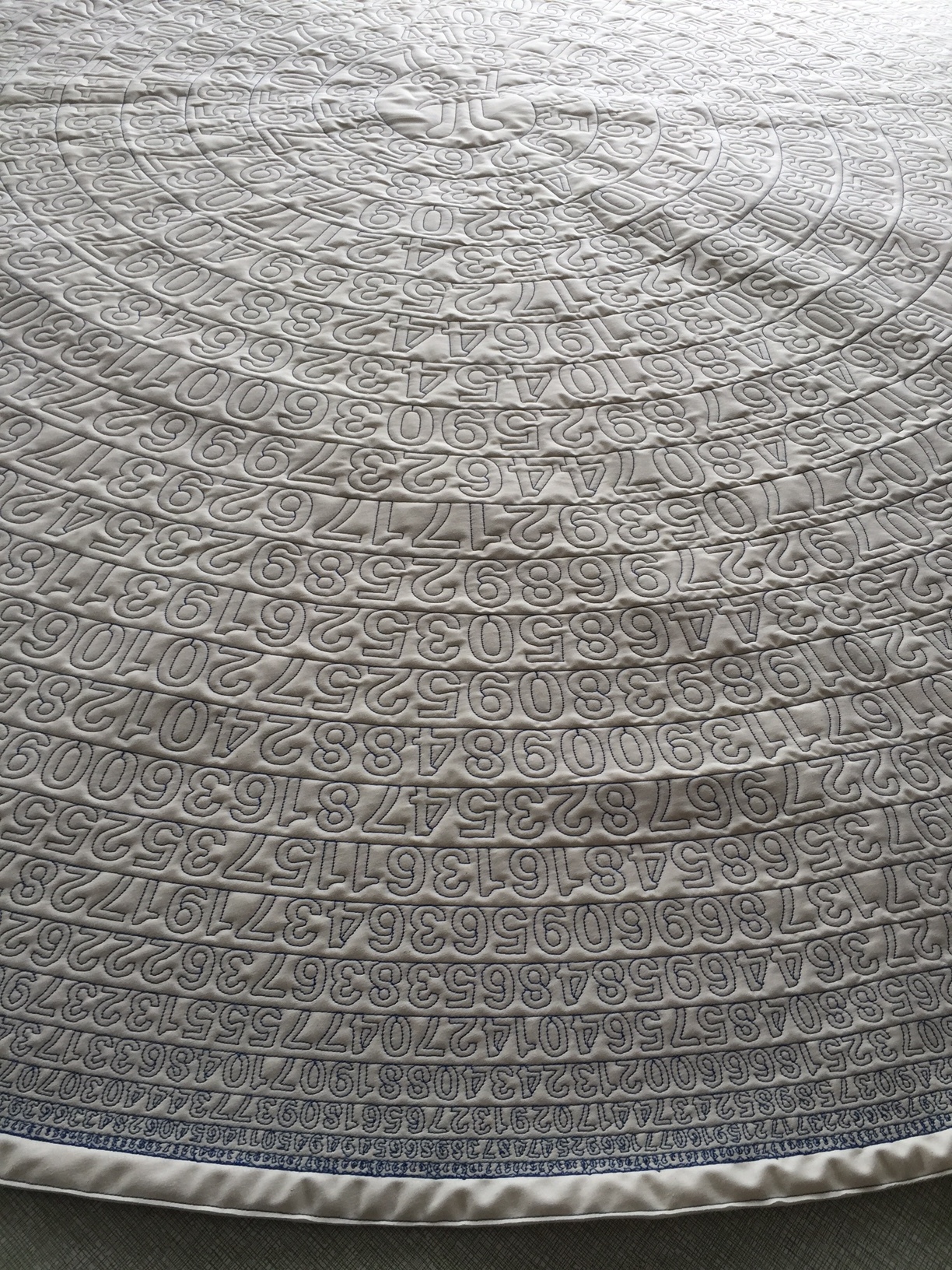
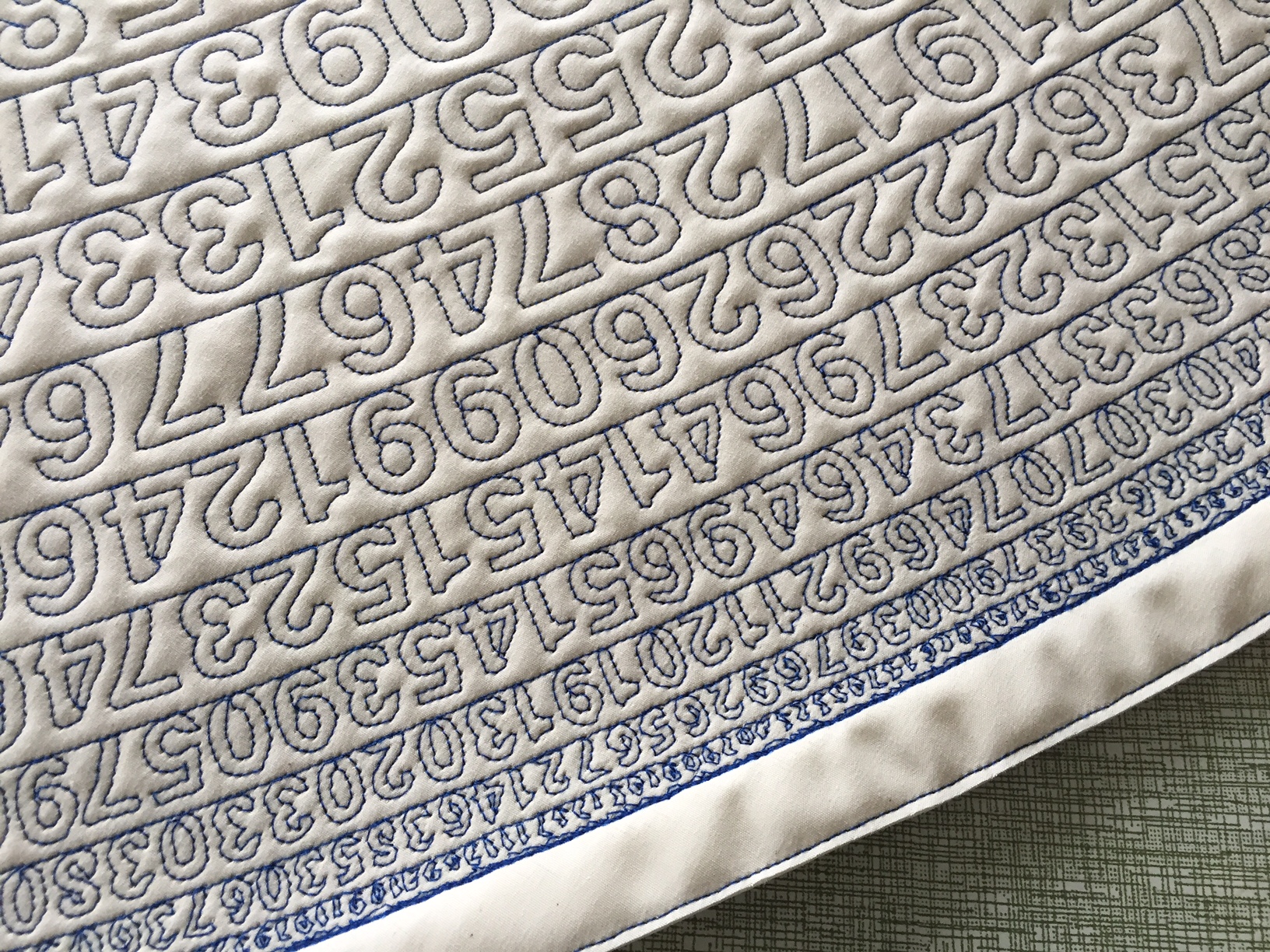
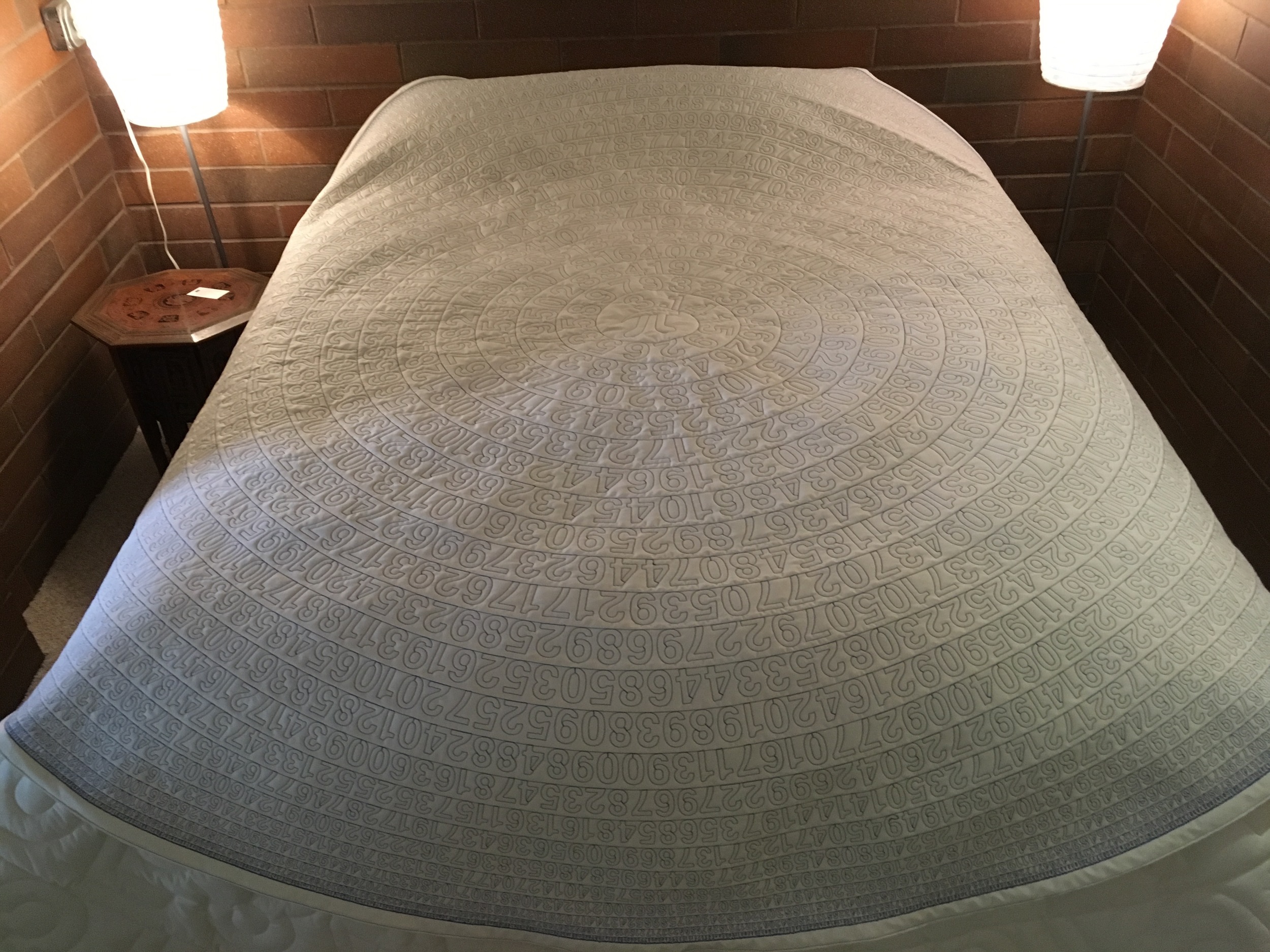
The design is one single continuous line of approximately 420,000 two-millimeter stitches. You can watch the machine making this quilt in these time-lapse views from the stitchcam (one from the overhead view, one from the camera mounted on the stitching head).
Here is a real-time view of the first 20 minutes of stitching. (Total stitching time was closer to 12 hours.)
I tried several different functions to determine the rate at which the digits get smaller as they go around the circle. The obvious choice would have been to have it be as if they were on the surface of a sphere, but this ends up with too wide of transition zone between reasonable-size and too-small digits. What worked best in the end was simply a sine wave. It's as if you are looking over the "horizon" of the sine wave. At first the sine rises with a fairly constant slope (digits all the same size for quite a while, getting smaller only rather slowly). Then quite quickly the curve turns over and starts to get flat (so the digits get small very quickly, going from easily readable to one-stitch-high in just three revolutions around the circle). Within the resolution of the 2mm stitches, everything is smooth and continuous: The digits just get smaller and smaller until eventually they are nothing but abstract squiggles, and finally a smooth circle of infinitesimally small digits.
Needless to say, this pattern is 100% computer-generated. The only human contribution was to select the font, and write the code for kerning, spiraling, shrinking function, etc. Basically art-directing the algorithm to produce a pleasing end result. Pi digits courtesy of Mathematica.
We've only made one so far, with dark blue thread on unbleached cotton fabric. I think it would look good with gold on black, but Nina is voting for unbleached on unbleached (which looks really good in our lower-density pi quilt). If someone orders one, we'll also make a square design with the corners filled in with some kind of simple fill pattern.
An added bonus of the round design is that it folds into a slice of pi!